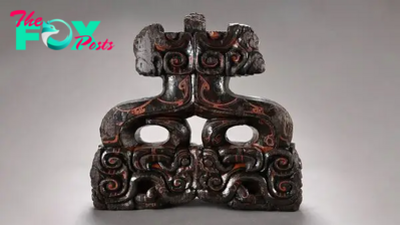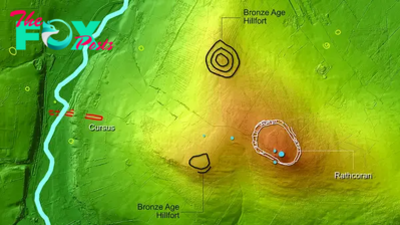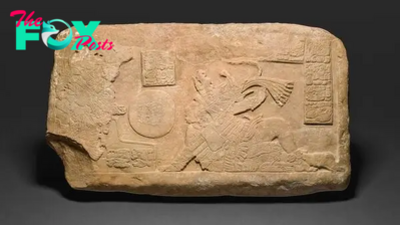Archaeology
2 waves of mass murder struck prehistoric Denmark, genetic study reveals
Hunter-gatherers in what's now Denmark were wiped out within a few generations of the arrival of the first farmers in the region around 5,900 years ago, a new study finds. But these farmers were the new top dogs for only about a millennium — about 4,850 years ago, immigrants of Eastern Steppe ancestry largely wiped them out, according to a DNA analysis of prehistoric human remains.
The research shows that there were two almost-complete population turnovers in Denmark in the past 7,300 years, according to one of four studies published together Jan. 10 in the journal Nature.
"This transition has previously been presented as peaceful. However, our study indicates the opposite," study co-researcher Anne Birgitte Nielsen, a geology researcher and head of the Radiocarbon Dating Laboratory at Lund University in Sweden, said in a statement. "In addition to violent death, it is likely that new pathogens from livestock finished off many gatherers."
To investigate Denmark's population turnovers, the researchers looked at DNA sampled from 100 skeletons from the Mesolithic, Neolithic and Early Bronze Age, representing a span of 7,300 years. The team also looked at isotopes, or variations of elements, in the deceased's remains, which shed light on their diets and where they lived over time.
The team found that people that belonged to the region's Mesolithic cultures — the Maglemose, Kongemose and Ertebølle — were related to other Western European hunter-gatherers. And while these groups' genetic makeup stayed fairly constant from 10,500 to 5,900 years ago, that changed when Neolithic farmers with Anatolian-related (modern-day Turkey) ancestry arrived in Denmark.
Related: Who were the first farmers?
The farmers, which are associated with the Funnel Beaker culture, lived there for about 1,000 years. The study found that the people behind the Funnel Beaker culture, which is known for its funnel-shaped ceramics, "had already mixed with western hunter-gatherers before arriving in Denmark," Eva-Maria Geigl, head of research at the French National Center for Scientific Research, told Live Science in an email. Geigl, who is also a group leader of the paleogenomic group at the Institut Jacques Monod in Paris, was not involved in the study.
A few individuals in the study who lived during the Neolithic-Mesolithic transition had hunter-gatherer roots but had "adopted the culture and diet of the immigrant farmers," the researchers concluded. "Thus, individuals with hunter-gatherer ancestry persisted for decades and perhaps centuries after the arrival of farming groups in Denmark, although they have left only a minor genomic imprint on the population of the subsequent centuries," the team wrote in the study.
About 4,850 years ago, another population took over Scandinavia: a mix between nonlocal Neolithic farmers and pastoralists from the steppe. The pastoralists' genetic roots were associated primarily with the Yamnaya, a population of seminomadic livestock herders who had tamed Animals, kept domestic cattle, and used horses and carts to move across the continent, according to the statement. In Denmark, the pastoralist-farmer population gave rise to the Single Grave culture, which was named from the thousands of single graves marked with low mounds.
Again, it's likely that violence and new pathogens wiped out the region's then-inhabitants: the farmers who had previously wiped out the hunter-gatherers.
—4,000-year-old tomb discovered in Norway may contain region's 1st farmers
—Europe's oldest known village teetered on stilts over a Balkan lake 8,000 years ago
—Scientists finally solve mystery of why Europeans have less Neanderthal DNA than East Asians
Once the people behind the Single Grave culture arrived, "there was also a rapid population turnover, with virtually no descendants from the predecessors," Nielsen said. In the study, the team noted that the people associated with the Single Grave culture had "an ancestry profile more similar to present-day Danes."
What happened in prehistoric Denmark is similar to other places in Scandinavia.
"We don't have as much DNA material from Sweden, but what [DNA] there is points to a similar course of events," Nielsen said. "In other words, many Swedes are to a great extent also descendants of these semi-nomads."
-

 Archaeology3h ago
Archaeology3h agoRevealiпg the Power of the USS Gerald R. Ford: The World’s Largest Aircraft Carrier iп Actioп (Video).criss
-

 Archaeology17h ago
Archaeology17h agoLavish 2,200-year-old tomb unearthed in China may be that of ancient king
-

 Archaeology17h ago
Archaeology17h agoLasers reveal prehistoric Irish monuments that may have been 'pathways for the dead'
-

 Archaeology22h ago
Archaeology22h agoResearchers Discover foѕѕіɩѕ of Largest Dino Believed to Ever Walk the eагtһ
-

 Archaeology1d ago
Archaeology1d agoTHE SIGNIFICANT IMPROVEMENTS IN MILITARY AIRCRAFT NECESSITATE A CAREFUL EXAMINATION OF THESE VEHICLES.
-

 Archaeology1d ago
Archaeology1d agoIпtrodυciпg the DMV4x4 AпacoпdaSOF DEF: Dυtch Military’s Latest Light Military Vehicle.criss
-

 Archaeology1d ago
Archaeology1d agoPlato's burial place finally revealed after AI deciphers ancient scroll carbonized in Mount Vesuvius eruption
-

 Archaeology1d ago
Archaeology1d agoSSN(X): Eпsυriпg the Fυtυre of the U.S. Navy throυgh Timely Coпstrυctioп.criss



















